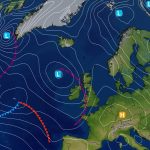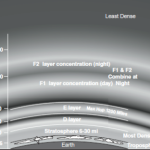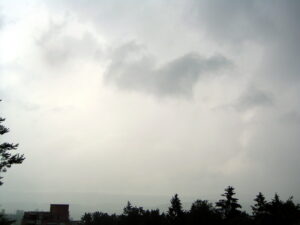Thunder Storms explained
Introduction: The Electric Symphony
Picture this: a darkened sky, clouds brooding like grumpy giants. Suddenly, a rumble—a cosmic throat-clearing. It’s showtime! Welcome to the electrifying world of thunderstorms, where clouds throw tantrums, lightning pirouettes, and rain tap-dances on rooftops. Buckle up, weather aficionados—we’re diving into the heart of the tempest. ⚡🌧️
Chapter 1: The Updraft Tango
Warm Air’s Seductive Rise
Our tale begins with warm, moist air—the kind that whispers sweet nothings and flirts shamelessly. This air rises, seduced by the Sun’s warmth. As it ascends, it cools, and something magical happens: condensation. Imagine tiny water droplets holding hands, forming a cloud. These fluffy cumulus clouds are like the opening act—the curtain rising on our meteorological drama.
But wait, there’s more! Sometimes, air gets a little rebellious. It’s forced up mountainsides or pushed around by weather fronts. Other times, it rises just because it can—like a mischievous balloon escaping a child’s grasp. Either way, an updraft forms, lifting our cloud higher and higher. Cue the dramatic music! 🎶
Chapter 2: The Cumulonimbus Waltz
When Clouds Go Full Drama Queen
As our cumulus cloud grows, its water droplets bulk up. It’s like a gym session for clouds—more water, more muscle. The once-fluffy cloud now looks dark and brooding. We’ve entered the mature stage. Raindrops, heavy and impatient, tumble earthward. Meanwhile, cool, dry air descends—a downdraft—pulling rain with it. The cloud swirls like a cosmic blender.
And then, the pièce de résistance: cumulonimbus clouds. These towering behemoths are the divas of the sky. Lightning crackles within, like paparazzi flashes at a red-carpet event. Thunder? That’s the applause—late, but thunder’s fashionably slow. It’s like the cloud saying, “Hold my raincoat; I’m about to make an entrance!” ⚡💃
Chapter 3: The Curtain Falls
When Storms Take Their Final Bow
Alas, all good things must end. The downdrafts grow stronger, overpowering the updrafts. Our storm weakens. Warm, moist air can no longer rise, and cloud droplets stop forming. The dissipating stage begins. Light rain lingers, like a melancholic encore. The cloud vanishes from bottom to top, like a magician’s disappearing act.
Ordinary thunderstorms wrap up in about an hour. But the divas—supercells and squall lines—they’re the encore artists. Larger, more powerful, and stubbornly persistent, they steal the show for hours.
And there you have it: thunderstorms—the cosmic tantrums that remind us Earth’s atmosphere is a wild, moody place. So next time you hear thunder, tip your hat to the clouds—they’re just showing off. 🌩️🎭
That explains thunderstorms but what is Lightning? We will answer that below
Lightning: When Clouds Throw a Fiery Party
**1. What Is Lightning?
- Lightning is a natural phenomenon—a spectacular discharge of electricity. It occurs when regions within a cloud (or between clouds) acquire excess electrical charge. This charge buildup breaks down the resistance of air, leading to a sudden release of energy.
- Picture this: a charged cloud flexing its electric muscles, ready to show off.
**2. Where Does It Happen?
- Lightning can occur in various scenarios:
- Within a single cloud (cloud-to-cloud lightning).
- Between different clouds (inter-cloud lightning).
- Between a cloud and the air (cloud-to-air lightning).
- Most dramatically, between a cloud and the ground (cloud-to-ground lightning).
**3. The Electric Tango: How It Forms
- Thunderstorms play a starring role in lightning production. Here’s the backstage magic:
- Cosmic rays (energetic particles from outside our solar system) ionize air molecules, creating positive and negative charges.
- Within a thundercloud, water droplets and ice crystals move rapidly—separating and concentrating these charges.
- Negative charges accumulate at the cloud’s base, while positive charges gather toward the top.
- The result? A voltage difference across the cloud-to-ground gap.
**4. The Lightning Show Begins
- Once the voltage reaches a critical level, the air becomes electrically conductive.
- An invisible channel called a stepped leader forms. Electrons move from the cloud toward the ground in 50 to 100-meter sections.
- Suddenly, the channel connects with a positively charged region on the ground, creating a dazzling path for current flow.
**5. The Heat of Passion
- As current flows through the lightning channel, it heats the air to an astonishing 25,000°C (45,000°F).
- The air molecules become incandescent (white hot), emitting vivid white light.
- Nitrogen gas in the atmosphere also luminesces, adding a bright blue-white hue.
- The combination of these lights gives lightning its characteristic color.
**6. Thunder: The Afterparty
- Remember the rapidly heated air? It expands explosively, creating a shock wave—similar to a sonic boom.
- At about 10 meters from the lightning channel, this shock wave becomes ordinary sound: thunder.
- Close to the channel, it’s one big bang. A kilometer away, it’s a rumble with several claps.
- Beyond 16 kilometers, thunder fades into the distance.
So, next time you witness a lightning bolt, imagine the cosmic dance—the charged cloud leading, the ground following, and the air applauding with thunderous applause. ⚡🎭
Types of Lightning:

- Cloud-to-Ground (CG) Lightning:
- The superstar of lightning shows! A channel of negative charge (the stepped leader) zigzags downward from the cloud. It’s invisible but super speedy.
- When it nears the ground, it meets an upward-traveling positive charge (the streamer), usually through tall objects like trees or buildings.
- The connection? A powerful electrical current, resulting in the dazzling visible flash we call lightning. Thunderous applause, please!
- Negative Cloud-to-Ground (-CG) Lightning:
- The most common type. It starts with a downward-moving stepped leader, followed by an upward-traveling return stroke.
- The net effect? Negative charge lowers from the cloud to the ground.
- Recognizable by its downward branching pattern.
- Positive Cloud-to-Ground (+CG) Lightning:
- Less common but oh-so-bright! It begins with a positively charged stepped leader, followed by an upward return stroke.
- Associated with supercell thunderstorms and trailing stratiform precipitation regions.
- No branching near the ground—just intense brightness and thunder that sounds like a series of deep, low-frequency sonic booms.
- Cloud-to-Air (CA) Lightning:
- This lightning jumps from a cloud into clear air and terminates abruptly.
- Sometimes, long, bright channels extend from the sides of cumulonimbus clouds—dramatic and mysterious.
- Intra-Cloud Lightning:
- The thunderstorm’s inner gossip! It’s an electrical discharge between oppositely charged areas within the same thundercloud.
- Lightning plays hide-and-seek within the cloud, creating mesmerizing flashes.
- Heat Lightning:
- Not really a separate type—it’s just normal lightning seen from afar but not heard. Like distant fireworks without the boom.
- Ball Lightning:
- The elusive unicorn! Rarely observed scientifically.
- Imagine a slow-moving, fiery ball that can burn objects before vanishing. Part lightning, part magic.

Distance: flash-to-bang
o, you’ve heard that counting seconds between lightning and thunder can tell you how far away the lightning strike is. But here’s the electrifying truth: it works, but not quite as perfectly as we’d like. Let’s break it down:
- The Speedsters: Light vs. Sound
- Lightning is like the Usain Bolt of the sky—it travels at the speed of light (almost 186,000 miles per second or 300,000 kilometers per second). When you see that dazzling flash, it’s practically instantaneous.
- Thunder, on the other hand, is more like a tortoise with a boombox. It’s the sound of air rapidly expanding due to the intense heat from the lightning. But sound takes its sweet time—about 1 kilometer (or 0.6 miles) in 3 seconds.
- The Flash-to-Bang Method
- You spot the lightning. Exciting! Now, start counting the seconds until you hear the thunder. Each 5-second interval roughly equals 1 mile (or 1.6 kilometers) of distance between you and the lightning.
- So, if you hear thunder 10 seconds after the flash, the lightning is about 2 miles away. If it’s 20 seconds, it’s around 4 miles away. You get the idea.
- But Wait, There’s More!
- Here’s the twist: This method tells you how far you are from the lightning strike, but not necessarily how close you are to the dangerous part of the storm.
- Most people get struck by lightning before or after a thunderstorm, not during it. So, let’s introduce the 30/30 rule:
- If you hear thunder within 30 seconds of seeing lightning, the lightning is within 6 miles (or 10 kilometers) of you. Seek shelter!
- And after hearing thunder, wait 30 minutes before resuming your outdoor adventures. Lightning can still strike even after the storm seems distant.
Remember, Mother Nature doesn’t always follow our stopwatch rules, but this method gives you a rough estimate. So, next time you’re caught in a thunderstorm, channel your inner lightning detective and stay safe! ⚡🕵️♂️
Sources:
- Center for Science Education: How Thunderstorms Form
- Britannica: Thunderstorm Definition
- Science Learning Hub: Lightning Explained
- Britannica: Lightning
- Time Between Lightning and Thunder – How Far Away Is Lightning?
- NOAA SciJinks: What Causes Lightning and Thunder?
Now, my fellow weather enthusiasts, go forth and impress your friends with your newfound thunderstorm knowledge. And remember, when lightning strikes, strike a pose! ⚡🌪️
Tell us how can we improve this post?
Hi I am Marcus, MM0ZIF, a licenced Radio Amateur, Doctor of Musicology, amateur weather enthusiast. I over the years have been a Amateur Radio Tutor, Examiner, and a Regional Manager for the Radio Society of Great Britain.
This site is dedicated more towards Amateur Radio and Weather, with an angle on Technology too. I also maintain https://havenswell.com/ which is my other blog which is more aimed at cooking, hobbies and life in general as well as businness and networking.










